|
Dear Customers and Friends The entire month of January felt just like January. We did not do much outside except haul wood for the woodstove and haul hay for the animals. In general, animals are comfortable, even in extreme cold if they have plenty to eat and minimal shelter. The horses, sheep and goats need at least an open to the south shed. The bison are the only exception. They have no use for shelter. Their wonderful bison coats keep them warm in all weather. Gail’s hens stay within their warmed coop and only venture out on sunny days when the temperature gets above zero. Quality Meats will be closed from February 4th through the 14th. I do not believe they have taken a vacation break since before COVID. Chicken dates. I failed to mention the times when chickens will be available this summer. Aaron and Emma plan to raise three batches of 100 each. A batch should be processed and ready for you in July, another in August and the third in September. For each batch, we will pick the frozen birds up Friday and then bring them on a normal Drop-off run. The stops are Albertville, Maple Grove and Andover. We can also hold some birds here or at Jopps, but not too many and not for long. Because storage and logistics is an issue with large numbers of frozen birds, this will be largely a “First come first served” process. Do not ask us to schedule that now. It is too early. As the time gets near, I will email those who have ordered chickens and we can make final arrangements. Thus far, you have ordered 178 of the planned 300 chickens. That leads right in to my comments about 2022 orders. This far 248 of you have ordered. That is ahead f the normal rate. That means half of you have ordered. Thank you for doing so. That makes it much easier to plan our year. You are ordering somewhat more than normal. Based on your orders, I have alerted our lamb supplier that we will need more lambs than last year. The same is true for hogs. Do not delay too long before you place your order. We will be short or run out of some species. You can always cancel, no reason required. February 26th will be Winter Farm Day. From 1 to 5 p.m. As normal, Gail and her wonderful helpers will deep from snacks in new hog lard. She will move that operation, the food, to the garage from the barn. We will probably be rendering lard on the big wood stove in the barn. There will be a campfire, probably plenty of snow and wagon rides to the bison and to the school house. We will use tractors and wagons instead of horses and sleds. Sorry about that but I do not feel hardy enough for that task. Our replacement teamster, son Timothy is not yet experienced enough. I will send more details about the Winter Farm Day later. Notes about bacon from our hogs. A customer asked about cooking our bacon recently. The bacon from our pastured pigs is much different than store bacon. The fat melts at a lower temperature. That is primarily because I feed our hogs a high percentage of oats. Oats is healthier for the pigs and it produces a higher quality fat. Because the pigs are pastured and eat a high-quality diet, their fat is nutritious for us. Because most store bacon is terrible food, cooks have developed the bad habit of cooking bacon until it is crispy. They do that to reduce the unhealthy fat of conventional, corn fed pork. Cooking bacon from our hogs, until it is crispy will absolutely ruin it. Cook it a lower heat. Cook it less overall. Or try cooking at a lowish temperature in the oven on a cookie sheet. I tell people that they would improve their diet considerably if they ate the bacon and skipped a morning pastry. I wrote a lengthy “how too”, article about savanna and woodland restoration. It is on Facebook. With 18 photos, is much too large to attach here. I will attach the introduction text-only to this letter. I will paste a photo or two below. Here is a link to the Facebook article if you are interested. I think that is all I intended to write about in this letter. If you refer a friend or relative, be sure to have them mention your name. I get a lot of inquiries. If they just ask about prices, I do not normally respond. Daughter Shannon has been home for a week, supervising work on her log home. Gail, Shannon and I will drive to Florida for a short, warm break before Winter Farm Day. All else is good. Stay warm and healthy. Tom p.s. Email if you have questions. Quality Meats, qualitymeatsmn@gmail.com Quality Meats, phone # 320 968 7218 Snake River Farm Website www.thesnakeriverfarm.com Snake River Farm Facebook page here. #1. This photo shows a large white oak. The shape of that tree with large lateral limbs, tells us that it initially grew in a open space. It has been crowded in recent decades by boxelders, black cherries, red oaks and buckthorn brush. I spent a half day cutting small trees and brush from under the white oak canopy, two years previous to this photo. The crowding was then much worse. I do not take enough before and after photos. There are several red maples in the photo also. We want to liberate the white oak and allow the red maples to grow. The final setting should provide over 50% sunlight to the surface. #2. This is the same scene, from a slightly different angle, three years later, in the Fall. The maples are in color.
The stump in the right center, is of the red oak that is to the left center in the previous photo. The White Oak has plenty of space. The soil surface, which was formerly bare of grazable vegetation, has been reseeded and is growing a rich mixture of grasses, legumes and forbs. The maples have space to grow into good sources of maple syrup
0 Comments
Gail and I were driving through the desert of south eastern New Mexico today.
Don’t ask how that happens. It just does. It was 75 degrees warmer than Minnesota. Hope is mostly a ghost town. Federal Highway 82 is the main street of Hope. We stopped to look at this beautiful Farmall tractor. Almost 100 years ago, the International Harvester Company (IH) was testing out an incredibly unique tractor design. Up until the mid-1920s, farm tractors were big, bulky, clumsy and expensive. What IH was trying to invent was the “row crop” tractor. A tractor that could be versatile and nimble enough to plant corn, cultivate row crops and mow hay. Before the 1920’s those farm tasks could only be done with horses. IH named their new tractor the “FARMALL”. The company executives were somewhat embarrassed by the looks of the FARMALL. It was a great departure from the square and boxy tractors of the time. Some thought it was “ugly as the Devil”. IH managers were also timid about taking a roll of the dice on the FARMALL. It was a great business risk. So, in 1924 and then again in 1925, IH test marketed several hundred FARMALLs into Texas. West Texas in fact, probably because that was far from the limelight. This beautiful old tractor, resting along Highway 82, near the west Texas border, is one of those early FARMALLs. The serial plate fell off long ago, but it has all the right features. Down to the special Texas style steel wheels. The lug pattern on the rear drive wheels was never used in the Midwest. That pattern was specially designed for the hard, rocky cotton fields of west Texas. Th first model of IH’s row crop tractor was branded just FARMALL. It was not until later that IH marketers realized that they needed more model names. In retrospect, this first member of the FARMALL family became known as the “Regular”. By 1928 IH was selling 25,000 Regulars per year. By the 1950s, IH had sold over 3 million Farmall tractors of all sizes. The lug pattern on the rear drive wheels was never used in the Midwest. That pattern was specially designed for the hard, rocky cotton fields of west Texas. If you look really hard, you can probably make out the letters that spell FARMALL on the side of the tractor’s fuel tank. This tractor was only painted once, and that was at the IH factory in Milwaukee. Ordering Guide for The Snake River Farm
Why do we use fractions? What do they mean? We sell direct to consuming families. According to Minnesota law, farmers cannot sell meat directly to consumers, but we can sell animals. Because most families do not want a full beef, bison or hog, the state allows us to sell fractions of that animal to more than one family. Hence the fractions. The state also allows me to haul your fractional animal to the butcher shop. We cannot sell specific parts of the animals such as steaks or hams. Consumers can have their fraction processed into steaks and hams. The state also requires that you deal directly with the processor and that you pay us and the processor separately. What do we mean by “Beef ¼ for Cuts” or “Bison ¼ for Cuts”? That means an unsegregated one-fourth of the entire animal carcass. (We do not do front of hind quarters.) You can have your one-fourth processed according to your specifications. Of course, that is limited to what can actually be done with one-fourth (a ¼). For example, you cannot have your ¼ processed into all steaks. You can ask that the butcher convert you ¼ into as many steaks as possible. There are many other potential “cuts” that can come from your portion, including ground meat (hamburger). We do not normally sell by the “1/8th for cuts”. It is simply too difficult to divide the carcass into that many equal portions. Animals sold for “cuts” are young, grass-fat and selected to be tender. What do we mean by “Beef 1/8th for Roast and Ground” or “Bison 1/8th for Roast and Ground”? An animal designated for “Roasts and Ground” is normally a mature, grass-fed, cow in excellent condition. These older animals may not produce tender steaks. Roasts can always be slow cooked until tender. Quality Meats processes the entire carcass into as many 2-3-pound, boneless roasts as possible. The rest of the meat is made into 90% lean, ground beef. The resulting roasts and hamburger are divided into eight equal portions. These cows are generally larger than the young animals used for cuts. Each 1/8th has a hanging weight of 80 to 100 pounds. What do we mean by “Beef by the 1/10th for Ground” or “Bison by the 1/10th for Ground”? Normally, animals designated for ground meat are mature. Sometimes they are younger animals that do not fatten sufficiently on grass to make high quality cuts. All the meat from the carcass is made into ground. Quality Meat then blends in enough grass-fat in to produce 90% lean hamburger. We standardize 1/10th to be 30 pounds of packaged ground. We do that for simplicity. A small animal might actually yield seven 1/10ths, a large animal eleven or twelve 1/10ths. Because the entire animal is made into ground meat, we can sell in any size portion (i.e. any fraction). We use 1/10ths because that is a convenient amount. Why are Hogs and lambs sold by the ½? The carcasses of pigs and sheep cannot reasonably be subdivided into 1/4s. The customer specifies how their ½ is processed. Why do we sell “Ground Pork by the 1/6th”? Again, the entire hog carcass is converted into ground. Quality Meats blends in the right amount of fat to produce 80% lean burger. This is terrific meat by the way. Mix 50/50 with our ground beef to have the best grilling hamburgers ever. This whole-hog ground is unique to Snake River Farm. Other ground pork is made from trim and scraps. Congratulations if you have read this far. I have individual info sheets on each of these products that give more details. Just email me for those. Thank you, Tom Tom@snakeriverfarmmn.com Watch Your Animals Graze
I don’t mean watch them from your pick-up, or watch them from a distance. I mean watch them close. Close enough that you can see what actually goes into their stomachs. The best time to do that is early in the morning when they first arise to fill their bellies. Ideally, they should be grazing shoulder to shoulder in a line. That is the natural formation for a grazing herd. You will learn the most when they are into good fresh pasture. Grazing in those conditions seems to put them in a competitive mood. They each want to get their share. That is when you will most accurately learn what they eat and how. Bison and cattle in a natural setting will eat about 70% herbage (grasses and legumes), 20% forbs (basically flowering non-grasses) and 10% browse (brush and brushy plants). It is normally stated that bison eat more browse than cattle. I am not sure that is true. In my pastures the two herds appear to eat similarly but that is a different story. In any case it is clear that bison and beef can benefit from a wide variety of plants. Not just a variety of grasses. The animals will do best when they have lots of plant choices. They should also have the knowledge of how much of each plant species to eat and when to eat it. It is well known that plants which many consider weeds have high nutritive value. Common plants like dandelion, alyssum, curly dock, smart weed, white campion, sow thistle and Canada thistle are actually more nutritious than many grasses. These and numerous other non-grasses are high in digestibility. Many forbs contain high levels of vitamins and minerals. Grazing animals will readily eat these plants at an early stage of growth. As with most plants these are best served before they get too tough or spiny. Many common plants are listed as toxic or poisonous to livestock. Some of the more common members of that list are nightshade, cocklebur, milkweed, pigweed, Johnsongrass and wild cherry. I do not doubt that these plants are poisonous when eaten at the wrong stage of growth or in excessive quantities. Nevertheless, I have watched my bison and beef eat all of these in the normal course of grazing without observing any ill effects. When grazing in a row as described above a typical routine is for the animal to grab several mouths of grass then swing its head over to purposefully bite the top six inches off of a milkweed, take a few more mouths of grass and then two bites of alyssum, take a few more bites of grass and then grab another mouthful of milkweed. It appears that they like variety in their meals as much as we do. Other plants especially those identified as herbs are known to have medicinal properties. Wormwood, although not a native plant, was believed by the farmers in Germany to be a vermifuge, a dewormer. I don’t doubt that it is. It is proven to have antimicrobial properties. I occasionally see cows walk over to a wormwood plant and eat the tender, top half of the plant. I think they are on to something. There is a plant called cudweed, a pungent member of the everlasting family that in folklore is supposed to help animals get over an upset stomach. My animals seek out and eat cudweed from time to time. Both bison and cattle are good browsers of brush and woody plants. The situation there is much the same as with forbs. Many brushy plants are high in nutrients. Some are listed as poisonous but our herds seem to eat them all at different times of the year. Buckthorn, a recent invasive bush, is a growing nuisance in much of Minnesota. It is not a problem on our farm. In the early fall the larger animals walk the plants down and eat the leaves and berries with delight. Near the beginning of this essay I wrote that animals do well if they have choices and knowledge. I have explained some of the choices. The knowledge is herd knowledge. Knowledge of what to eat, when to eat it and how much to eat. For a herd to have this knowledge it must have senior individuals that have lived on the land. Older cows are best. The younger animals are great observers of their elders. If the old cows know, the herd knows. I should add a few words of caution. Some animals will overindulge. I have seen a heifer eat choke cherries until she died with a stomach plugged with seeds. That was not a toxicity issue but an actual mechanical plugging of the stomach chamber. I once had a steer that ate himself sick every time he could find pine needles. I have had a single animal in the herd get sick each time I rotated the herd through a particular pasture. I never did figure out what she was obsessing on. I just took her permanently out of the rotation. Some plants can cause quick neurological problems. Some cause fatal liver failure. There can be problems. The problems should be rare if both you and your animals have knowledge of what is growing in your pastures. There is a group at the Utah State University Extension Service that does great research into grazing issues such as these. If you wish, you can follow the link below to their website and sign up for the BEHAVE Research and Outreach Newsletter. http://extension.usu.edu/ Best Regards, Tom Barthel Secretary and Director at Large The first photo is of a young cow and her calf. The calf was born at the beginning of April. Two more heifers are due to calve soon. These animals, plus two yearlings and three more calves that were born here last summer comprise a “welcoming committee” for new arrivals.
Here is how that works. Each year, from April through July, I buy 100 beef animals. Most are calves, some are yearlings and some are cull cows. I then raise and or fatten them on grass for my customers. I select virtually all of those animals from a reputable sale barn. The sale barn is in a good location near the Minnesota-Wisconsin border. That is a good location, because good grass fed animals come from small farms in northwestern Wisconsin. Buying cattle through a sale barn seems to be the only way to get good animals at a reasonable price. That bothered me until I spoke with Joel Salatin about it. He does the same thing. Almost all of the cattle are sold as singles. That means they are the only one I am able to buy from their home herd on that day. The animals are under terrible stress during this process. Cattle are herd animals. Without a herd, they are terribly lost. It generally takes two days from the time the animals are selected at their home farm, until they reach the farm, pen or feedlot of their new owner. During that time, they are separated from their herd of origin, yelled at, poked, prodded, driven through pens and locked in a headstall, where they are subjected to vaccinations and other indignities, yelled at some more, loaded onto trucks or trailers, hauled long distances and unloaded with a group of strangers. Those strange animals are scared and angry. The bigger animals push them around, especially if the space is small. At their new home, the water tastes different and is provided in a different way. The food has no connection with what they have been eating. Everything is confusing, everything is frightening. I am not being overly dramatic. The process of separating and hauling cattle is so stressful that farmers gave the illness that normally comes from it a name. It is called Shipping Fever. All cattle that are separated and moved in this way are susceptible to Shipping Fever. Numerous medical treatments have been developed for it. Amazingly, little consideration has been given to prevention of the disease. Just medical treatments for the disease and its symptoms. In general, younger animals are more susceptible to Shipping Fever than older animals. Apparently, older animals can handle the trauma better. Contrary to its name, Shipping Fever seldom involves a fever but it is very serious. It frequently results in death from pneumonia-like symptoms. Seemingly healthy animals develop respiratory symptoms and die in a day or two. As a buyer, I am on the tail end of this process. (No pun intended.) There are limitations on what I can do for these cattle. I carefully select animals that give all the signs of being healthy and vigorous. I have every animal rechecked by a veterinarian. They get vaccinations and treatments that comply with the organic standards. If the vet suspects an animal is ill, that animal is treated with antibiotics as necessary. Fortunately, antibiotic treatment is necessary for about one animal each year. The greatest good I can do for the animals is to reduce their stress level as quickly as possible. That is where the Welcoming Committee comes in. The first thing the new animals need is a herd. The welcoming committee is a mixed group of calm cows, calves and yearlings for them to join. The animals that I keep overwinter are specially calmed and trained. They are accustomed to my presence and relaxed when I am around. The new animals although frequently spooky and untrusting, closely observe how the resident animals and I interact. The animals have lots of space, grass and easily accessed water. I provide hay in several feeders so the cattle do not have to compete. The results are dramatic. The second photo is of the herd and seven new animals just two hours after they arrived at our farm. They have already bonded and blended together. They are intermingled and resting with full bellies. Two of the new arrivals are lying flat in restful abandon. No doubt they are exhausted but clearly, they feel safe and relaxed. The members of the welcoming committee are trained to come when I call. They remain tranquil when I walk among them. They are also trained to follow me when I lead them. That is necessary because we rotate the herd through 70 pastures during the growing season. The new animals see this behavior. By the third day, the entire herd will come when I call. They are already trained to follow me to new pastures. It is quite unlikely that any of these new animals will succumb to Shipping Fever. They are at the start of a very good summer. Best regards. Tom The Anoka Sand Plain was deposited by melting glaciers about 12,000 years ago. Most of Sherburne County is in the Anoka Sand Plain. Since the retreat of the glaciers, climate and vegetation have produced many marshy areas. These marshes and swamps frequently have deposits of peat and silt that are in some places are six feet deep or more.
American Bison, commonly called buffalo lived in the mixed prairie and woodlands of Sherburne County for thousands of years. Bison bones and the bones of other large animals are frequently found in the peat of the Sand Plain. A Sherburne County “dig” supervised by Dr. Stanley Lewis of Saint Cloud State University in 1984 revealed a substantial number of bones and bone fragments mixed throughout a cross section of peat. Although bones of many different animals and fish were found, bison bones were the most common. Bison bones are more likely to be found for at least two reasons. Bison often existed in large numbers and bison are big, so their bones are naturally thick, which causes the bones to last a long time in the earth. In most cases, the bones are found one at a time and spread throughout a relatively large volume of peat. This makes it difficult or impossible to reassemble one individual animal. Several complete and nearly complete skeletons have been discovered on the Snake River Farm owned by Tom Barthel and Gail Wilkinson. These skeletons are in sand below peat. The animals are in positions that imply that they died struggling to escape quicksand. The bison skeletons are in remarkably good condition. Soft tissues like hide, muscle, organs, horn shells, and hooves have been dissolved. However, virtually all the bones and some hard collagen tissues like spinal discs, the meniscal pads of major joints and the thin bony elements of the skull interior have been preserved. The majority of the more complete animals are relatively large. A typical skeleton would have belonged to an animal that stood well over six feet tall at the shoulders and had a tip-to-tip horn span of thirty-one inches. These bison are about 25% larger than modern bison. Major skull fragments of a much larger bison whose horn cores are 50% larger have also been found. The location of the animals below the peat suggests that they died 8,000 to 10,000 years ago, before the peat was laid down. The bison may have been driven to what was then a low area by fire or storm, with a number of animals dying in a single event. Alternatively, they may have wandered into an area of sand that had been super saturated by heavy rain or they may have broken through thin ice. So far, there are no strong clues either way. Some peat-like organic material has been found under a couple of the skeletons indicating that the area was in the early stages of becoming a marsh when the bison were trapped. No signs of predation by other animals or humans have been found; further supporting the theory that the animals were in what was at least temporarily an inaccessible area when they lost their lives. The bones are black or very dark which is typical of bones that have been buried under peat for a long time. The Barthels assembled a complete skeleton of a mature cow in 1998. The bison cow has a 28-inch horn span and measures about six feet high at the tallest thoracic vertebra (the hump.) She is named Samantha and resides at the Becker Public Library. This skeleton is unique as virtually all of the bones are from the same animal. One rib shows the effect of being broken and subsequent healing. The break probably occurred in a dispute with another bison. Before assembling Samantha, Barthel and Wilkinson visited numerous museums including the Smithsonian to learn how other similar animals were assembled and fixed in place. The general technique that Barthel used was to fix and mount the spine on small metal posts and then to loosely attach the pre-assembled legs and skull to the spine. Hot melt glue is used in the joints to replicate the meniscus that has decayed away. Black wire of various small diameters and black self-tapping screws were used to hold the joints together. The resulting skeleton is both flexible and rugged. Samantha has held up very well to nearly a decade in the Becker Public Library with only an occasional minor repair or adjustment. She is accessible to the children who visit the library and gets “touched” daily. A second bison skeleton was assembled in 2006 at the request of the Sherburne County Historical Society. This bison is named Tatonka. Tatonka has about 70% of his original bones. Some of Tatonka’s bones were replaced with others of higher quality to produce a better specimen. Tatonka is on permanent display in the main hall of the museum. There are several places on the Snake River Farm where individual bones or bone fragments can be easily found. Barthel and Wilkinson occasionally host school or youth groups for a “dig.” In those cases, the children each take a bone fragment home. Gail posted a video in late April on facebook, Snake River Farm Minnesota. It got 2400 viewers. Incredible.
There was one comment that made me think I should write at least a little about animal handling. You cannot see it but I am struggling with how to start this topic. I think I will just jump in. I have been handling animals all of my life. My earliest recollections are of doing farm chores. I have always enjoyed farming. I cannot say that I have never been rough with animals but I can say that I have treated animals with great care for decades. One of our goals is to humanely raise and harvest our animals. We work hard to give our animals the best reasonable life and a painless, stress free death. A good life in my opinion means that the animals have a healthy diet, shelter as needed, protection from predators, a low stress existence and a satisfying social life. Each species of animal has different needs in each of those categories. For example, our bison have no use for shelter nor do they need protection from predators. But bison social needs are high. It is well known that a lone bison will not prosper. Poultry need both shelter and protection from predators and their social structure is well defined. Think, “pecking order”. I intend to explain many of those differences and how we try to satisfy them. I will do so in a series of letters. For now, I will give you the abbreviated form. We do not yell at our animals. I can imagine the need to yell in a dangerous situation but I cannot recall such a situation in recent years. We handle and work with all of our animals calmly, gently, and courteously. Animals that are treated calmly are themselves calm. You will see that when you visit the farm. Providing a low stress life for the animals has many benefits. Calm animals are easier to handle, easier to care for. It is easier for me to work with calm animals. Calm animals are healthier and grow better. Whether I am working with horses, cattle, buffalo, hogs, sheep, or smaller animals, every interaction is a training experience. The animals either learn new behaviors, behaviors that I want from them, or they learn to be edgy and wary. I used the word courteous above. I know that seems like an odd choice in this context. I do not believe it is out of place. For example, when I am traveling through the animal’s pastures, whether on foot or on a tractor, I take care to give them time to move away. Or, I walk around the animals so they do not have to scatter before me. It might seem odd but they, especially the senior animals have their own sense of dignity. To make them scatter to let me through shames them within their family or social group. Humiliate a bison matriarch and she will never forgive you. Animals remember such things. We brought home 110 little pigs a couple weeks ago. Since then I have been in their pen several times a day to bring them feed to water them and to check on their health. I walk slowly and talk to them as I move around. They are very active, but they are not afraid. They have learned to be comfortable with my presence. In fact, one measure of success is when I reach the point where I need to tell individual animals that I am there because none sounded an alarm. I like it when they feel comfortable ignoring me. We brought the piglets home in a stock trailer. The first week I used that stock trailer as their temporary sleeping room. Casey posted a nice photo on our facebook page of the pigs sleeping in the trailer. One of the reasons I use the trailer for their first shelter is because I will use the same stock trailer to move them to pastures. In the fall, I will use that trailer again to transport them to Quality Meats. They have good memories of that trailer and they will readily walk into it whenever I need them to. No yelling, no shocking, no hitting required. I move the bison and beef herds by leading them. I have attended some excellent workshops on driving cattle and bison. I find however, that training them to follow me when I call works much better. Leading eliminates the crowding and stress that comes from driving. I can easily lead the cattle herd from the far end of the farm, through many turns, gates and even across the township road to get them to a specific pasture. A walk in the park. In case you are wondering, I lead the bison but then get out of their way when they stampede, as they always do. It is their nature. Hogs cannot be lead. They are not herd animals but rather family animals. I will explain that in a future letter. Pigs will only go where they want to go and they will not stick together. It is a subject for yet another letter but I also train the animals for the day when I will harvest them. The goal is an instant, pain free death with no anticipation of danger. If this letter raises questions for you, please ask. Best regards. Tom I have been handling animals all of my life.
My earliest recollections are of doing farm chores. Feeding calves. I have always enjoyed farming. One of our primary goals at our farm is to humanely raise and harvest our animals. We work hard to give our animals the best reasonable life and a painless, stress free death. A good life in my opinion means that the animals have a healthy diet, shelter as needed, protection from predators, a low stress existence and a satisfying social life. Each species of animal has different needs in each of those categories. For example, our bison have no use for shelter nor do they need protection from predators. But bison social needs are high. It is well known that a lone bison will not prosper. Poultry need both shelter and protection from predators and their social structure is well defined. Think, “pecking order”. I intend to explain many of those differences and how we try to satisfy them. I will do so in a series of letters. For now, I will give you the abbreviated form. We do not yell at our animals. I can imagine the need to yell in a dangerous situation but I cannot recall such a situation in recent years. We handle and work with all of our animals calmly, gently, and courteously. Animals that are treated calmly are themselves calm. You will see that when you visit the farm. Providing a low stress life for the animals has many benefits. Calm animals are easier to handle, easier to care for. It is easier for me to work with calm animals. Calm animals are healthier and grow better. Whether I am working with horses, cattle, buffalo, hogs, sheep, or smaller animals, every interaction is a training experience. The animals either learn new behaviors, behaviors that I want from them, or they learn to be edgy and wary. I used the word courteous above. I know that seems like an odd choice in this context. I do not believe it is out of place. For example, when I am traveling through the animal’s pastures, whether on foot or on a tractor, I take care to give them time to move away. Or, I walk around the animals so they do not have to scatter before me. It might seem odd but they, especially the senior animals have their own sense of dignity. To make them scatter to let me through shames them within their family or social group. Humiliate a bison matriarch and she will never forgive you. Animals remember such things. We brought home 110 little pigs a couple weeks ago. Since then, I have been in their pen several times a day to bring them feed to water them and to check on their health. I walk slowly and talk to them as I move around. They are very active, but they are not afraid. They have learned to be comfortable with my presence. In fact, one measure of success is when I reach the point where I need to tell individual animals that I am there because none sounded an alarm. I like it when they feel comfortable ignoring me. We brought the piglets home in a stock trailer. The first week I used that stock trailer as their temporary sleeping room. Casey posted a nice photo on our Facebook page of the pigs sleeping in the trailer. One of the reasons I use the trailer for their first shelter is because I will use the same stock trailer to move them to pastures. In the fall, I will use that trailer again to transport them to Quality Meats. They have good memories of that trailer and they will readily walk into it whenever I need them to. No yelling, no shocking, no hitting required. I move the bison and beef herds by leading them. I have attended some excellent workshops on driving cattle and bison. I find however, that training them to follow me when I call works much better. Leading eliminates the crowding and stress that comes from driving. I can easily lead the cattle herd from the far end of the farm, through many turns, gates and even across the township road to get them to a specific pasture. A walk in the park. In case you are wondering, I lead the bison but then get out of their way when they stampede, as they always do. It is their nature. Hogs cannot be lead. They are not herd animals but rather family animals. I will explain that in a future letter. Pigs will only go where they want to go and they will not stick together. It is a subject for yet another letter but I also train the animals for the day when I will harvest them. The goal is an instant, pain free death with no anticipation of danger. If this letter raises questions for you, please ask. Best regards. Tom This letter is about horses.
We keep about ten horses. All geldings. We have had mares and stallions but it is simpler and safer to have a herd of geldings only. Safety is an important issue. Many inexperienced people and many small children enjoy our horses each year. I train all the horses to ride and to drive. They are ridden year around. There is also a lot of wagon and bobsled work for them I use them as much as I can for pasture work. Harrowing the pastures in the early spring. Tilling, seeding and packing the pig pastures. Moving pastures in the summer. Logging when we can find the time. Most of our horses are Mustangs or of Mixed breeding. I prefer mustangs. Mustangs are significantly healthier and more durable than other horses. They have terrific heart and put great effort into any work. They are inclined to take care of their own needs. They are proud and their sense of dignity shows in everything they do. Perhaps most of all, I like the challenge of taming mustangs. A domestic horse wants to know if it can trust you. A mustang wants to know if you deserve its trust. Two of our horses are gaited horses. Gaited means bred for a smooth saddle ride. Two are horses of mixed breeding that just turned up here. Well, maybe there is more to it than that but they were not planned. We have never sold a horse. I have considered it but Gail will not part with a horse once she comes to know it. Why we keep only geldings. Mares are moody when they are in estrus. Worse yet, when there is a mare around, the geldings tend to be aroused. Stallions, like bulls can be dangerous. So can geldings who think they are stallions. The greatest danger is not that a horse will intentionally hurt a person but rather that someone will get hurt by being between the wrong two horses. The worst horse kick I ever received was intended for another horse. Gelded horses are not like steers. Cattle are typically castrated very young. Horses cannot be castrated until they are more than a year old. Because of that, geldings frequently retain some stallion-like behaviors throughout life. Training a horse is different from training any other large animal. The nature of a horse is different from the nature of a dog or a cow. The fundament difference exists between a dog and a horse because the dog is a predator and the horse is prey. Cattle are prey animals too but cattle have horns. The primary defense for a horse is to run. People like horses, so the intuitive response is to be kind to a horse. That is nice, but horse relationships are not based on kindness. Horse relationships are based on dominance. Not dominance based on fear and pain. Fear and pain produce spooky, dangerous horses. But, dominance based on leadership, consistency, trust, protection and calm. This letter is not about horse training. I know a few things about horse training but so do many others, including some of you. There are thousands of books on horse training but all horse taming and training is based on understanding the unique nature of horses. I will give an example or two.
A good trainer understands those keys. No doubt there have been countless humans with unique insight (whisperers) around at all times over the history of horse domestication.
Horses spook. It is the nature of a horse to run from any threat. A run-away or a bolting horse is very dangerous. The reason for this is based in horse nature, of course. In a flight situation, as prey, the slowest horse was the one that got eaten. Horses have developed the ability to take flight to a fine edge. They are so well adapted to flight that many “spooky” signals never reach their brain. Everyone who trains horses trains them to be as spook resistant as possible. Some horses are incredibly spook resistant. I trained my boyhood horse for hunting jack rabbits. I could shoot a 12 gauge shotgun over his head at a full run. ( I do not recommend this by the way.) Nevertheless, every horse will spook at something This letter is about cattle.
We sell grass-fed beef. Cattle are social, ruminating, prey animals. Taxonomically, cattle are in the same “Family,” (bovidae), as bison, sheep, goats and antelope. Obviously, cattle are more like bison, than they are like sheep. Cattle are in the same “Order,” (artiodactyla), as pigs and horses, because they walk on their toes. Ruminating means that they have complex stomachs which allow them to digest fibrous plant material. That is a great advantage; cattle can live on fibrous plants that would not sustain us. We keep only a few beef animals through the winter. All of our land is grazed. We must purchase winter hay. Hay for the bison, beef and horse herds is our single greatest expense. Because of that, we minimize the number of animals we keep through the winter. As I write this letter, it is March, and there are six beef animals on the farm. By early summer, we will have 100 animals grazing 300 acres of pasture. Each spring I personally select the calves and yearlings that we will raise for you. Those animals come from small farms in central Minnesota and western Wisconsin. I select animals that will grow well through the summer and become grass finished beef by fall. Finished means large enough, mature enough, and fat enough to be great grass-fed meat. Most of the beef animals are sold to you by the ¼ for cuts. I buy only heifers for that purpose. Heifers finish younger and smaller than steers. The fact that heifers finish younger is important. The Minnesota grazing season is bountiful but short. Our beef animals must be ready for harvest by December at the latest. Heifers finish smaller than steers and that is also important. Most of our customers want a smaller ¼ of beef. 300 acres of pasture, over 60 paddocks. Snake River Farm is the main farm. It has over 200 acres of pasture. Sandhill Farm has 70 acres of pasture. Five Straw Farm has more than 20 acres of grazing land. Each farm is fenced and watered for rotational grazing. There are more than 60 separate paddocks or pastures on the three farms. There will be a herd on each farm, from the start of the grazing season until late fall. Lead cows welcome the new heifers. The six beef animals that are here now are the welcoming animals for each farm. Having mature animals to greet the new arrivals is incredibly helpful. When the animals arrive, they are stressed. They have been corralled, loaded, and hauled from the farm of their birth. Sometimes they arrive with a herd mate or two, but often they are with complete strangers. It is important to calm the new animals as soon as possible. Young animals become ill quickly when under stress. This is where the welcoming animals come in. The senior animals that we overwinter are selected to be good leaders and matriarchs. They are calm. They know the pastures. They know us. One or more of the overwintered animals will be on each farm to welcome the new arrivals. That works miraculously well. Young animals look for leadership. The heifers find that most readily in a cow. Animals quickly learn from their leaders. The cow is calm and that relaxes the new arrivals. The cow sets the schedule. She leads the way to food and water. I select a leader who is a superior grazer. From her the heifers learn what to eat, when to eat it and how much to eat. Plants that are considered toxic are often medicinal in the correct dosage. The lead cow is trained to come when I call. When she comes, the herd will follow her. That means within a day of arrival I can move the herd to fresh pastures. Perhaps most important, the heifers see that the cow is not afraid of me. I can walk to the cow and touch her. That has a great effect on the new animals some of whom were mishandled in the past. Our cattle do not have horns. Both male and female cattle naturally have horns. That includes all varieties both dairy and beef. Horns can be problem, however. They are dangerous to farmers and to other cattle. Horns are managed in two basic ways. Some breeds have been selectively bred to be hornless. For example, Angus cattle, male and female, black or red are hornless. Farmers called such cattle naturally polled. Virtually all Holsteins, the black and white dairy cattle, have horns naturally. Nevertheless, very few adult Holsteins have horns. Their horns are removed when young. That is done by cutting, burning with a special hot iron or by caustic chemical. Frankly, there is no delicate way to dehorn. Most of the calves we raise are naturally polled. I do not buy horned animals. An animal with horns will quickly learn she has an advantage and abuse her herd mates. Besides, as Gail says, farming buffalo with horns is excitement enough. Proper grazing improves prairies, woodlands, wet meadows and stream banks. Grass farmers know that grazing is a powerful tool for improving prairies and pasturelands. In many areas people are learning that grazing is the critical element in both grassland and savannah management. Burning has a place, but burning should be used much less frequently than has been taught. Cattle and bison can do an excellent job of improving woodlands. For example, Buckthorn is an invasive bush in many forests. It grows here. It is an attractive plant that provides winter berries for birds. On our farms, the grazing animals keep Buckthorn in check. The cattle walk the plants down by wedging the thin trunk between their front legs. They eat the leaves and berries as they move ahead. Buckthorn is not a problem in our woodlands, nor are other brushy plants. Properly timed grazing is good for wet meadows and stream banks. It has been erroneously taught that cattle should be permanently fenced away from streams. In some situations that may be true but for most streams that is poor management. Prolonged “rest” is as great a problem as overgrazing. Ungrazed stream banks often go to brush and trees. Then total shading produces a soft unstable bank, subject to erosion. Managed grazing that mimics natural herd movements can maintain healthy stream banks. It would be an advantage to graze the bison and cattle herds together. I have tried that for four years and the results have been mixed. It would be good to pasture them together to form a larger herd of grazers. It may be counterintuitive but the ideal grazing situation is large numbers of animals that eat or trample everything in a few hours. Then move on to let the land rest for months. Some farmers, mob graze small paddocks with enormous numbers of animals. They get a wonderful plant and soil response. The opposite extreme, continuous grazing is quite destructive to plants and soils. Continuous grazing is common. Many people with small numbers of horses or cattle continuously graze. You can watch the pasture degrade, year after year. Unfortunately, one of the bison cows is not tolerant of the beef heifers. Last summer she injured three heifers in three days. I separated the herds. The heifers recovered although one limped for a month. Perhaps I can solve the problem by converting the ornery cow to hamburger. Space, social order and choices. Cattle, like most animals establish a hierarchy, or pecking order. To do that they need adequate space. Our herds have enough space to arrange themselves socially, at all times. A stable social order means low stress. Adequate space also means they never have to stand in mud or manure. They can always find comfortable places to rest. They have trees for shade on hot summer days. At times, the animals enjoy using those same trees as “rubs.” Our pastures have a great variety of grasses, forbs and shrubs. The animals are free to make grazing and browsing choices to maintain good health. Pasture harvesting eliminates stress. We pasture harvest both beef and bison. This eliminates the high stress activities of corralling, loading, unloading and then dying in a strange place. Through pasture harvest, the animals do not anticipate, nor are they aware of their death. No fear, no pain, no stress. Some of you have asked for more about harvesting. I will write a separate letter on that topic. Our cattle get daily care. The animals are observed every day. They have frequent human contact. We walk among them several times a week to see that they are well but also to teach them to be calm when we are with them. Spending time with the animals, observing them closely and seeing that there needs are met is fundamental to animal husbandry. It is central to being a farmer. Best regards. Tom p.s. I wrote a more general letter on cattle about a year ago. You may be interested in that letter also. How We Select our Beef Animals on March 29, 2013 |
Categories
All
Archives |
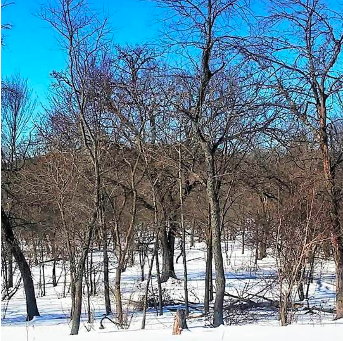
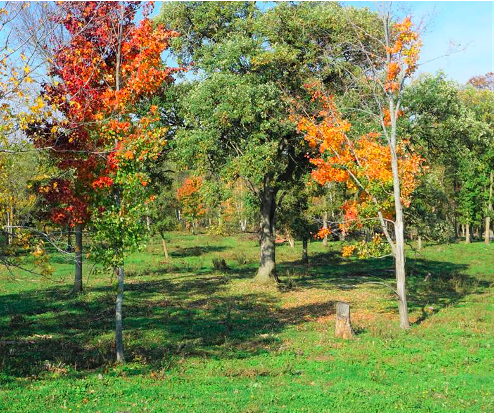
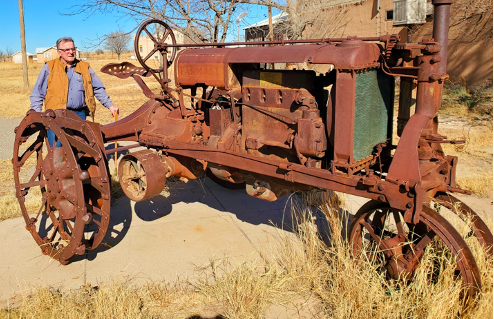
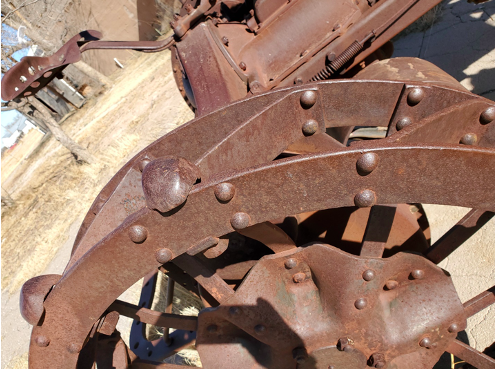
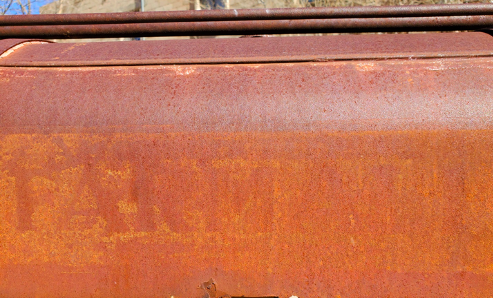
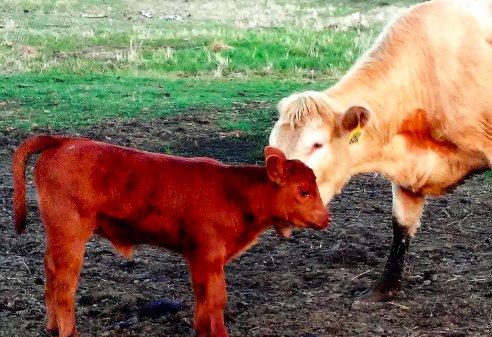
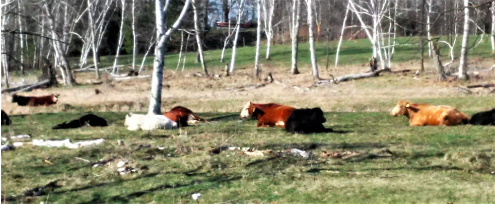
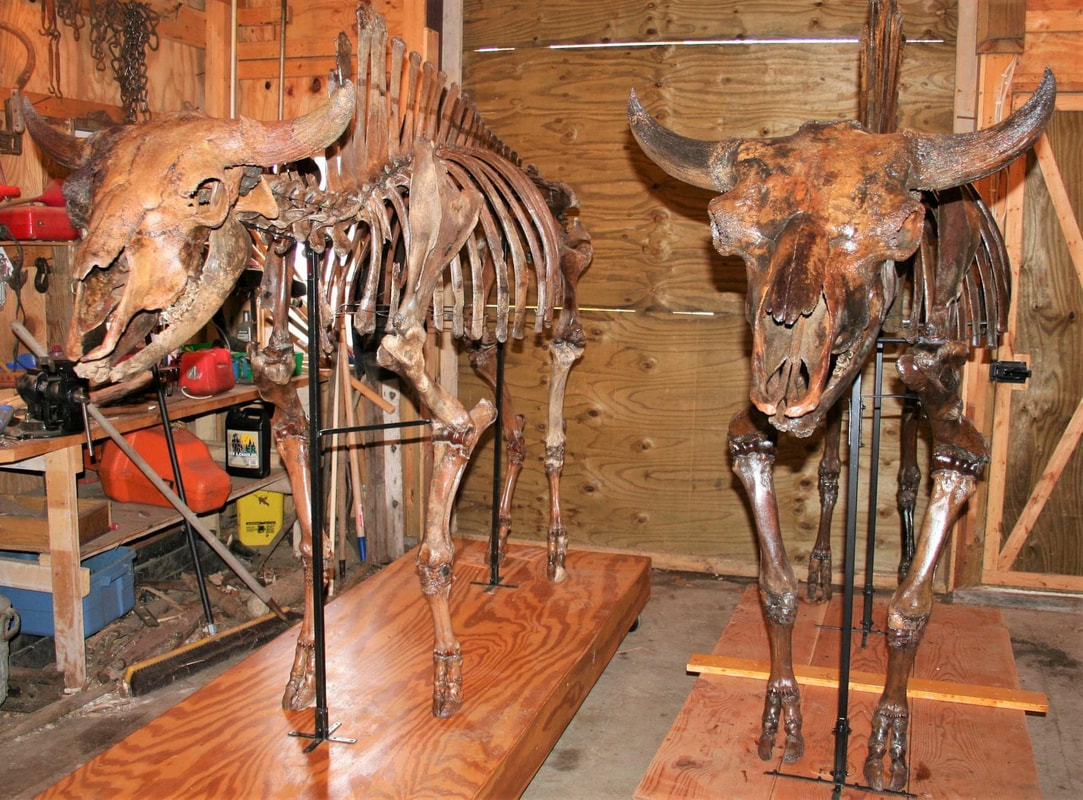
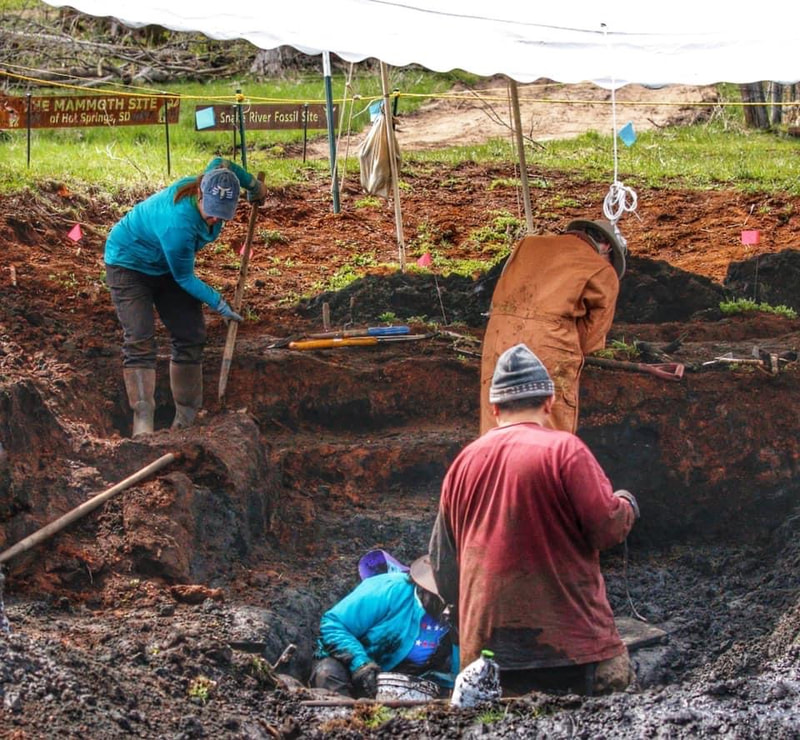
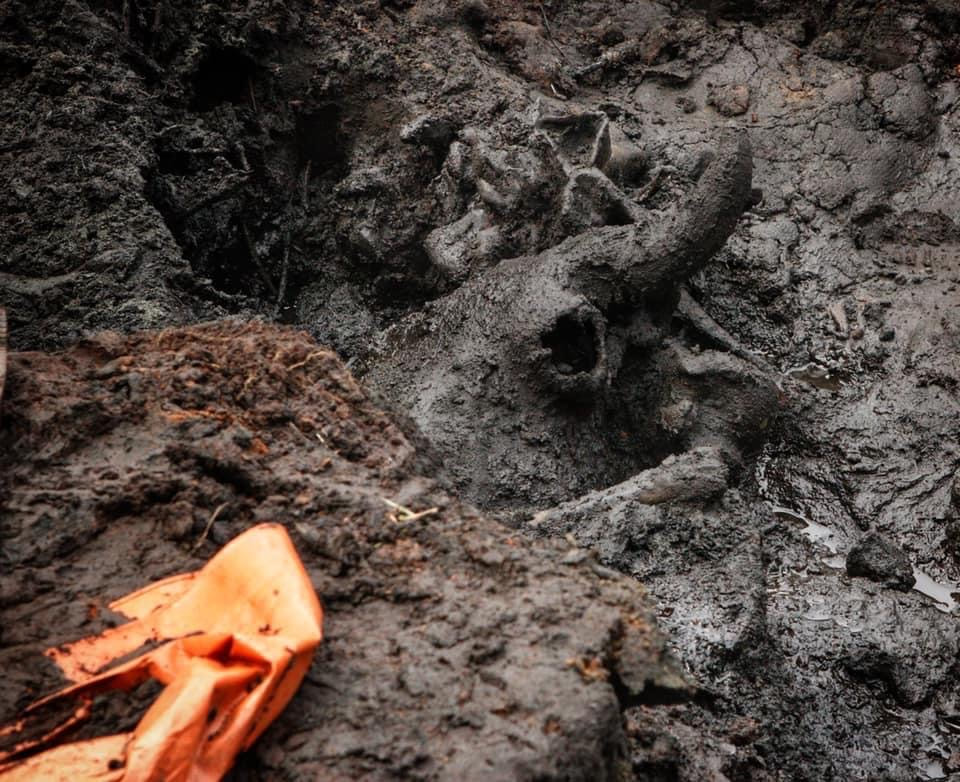
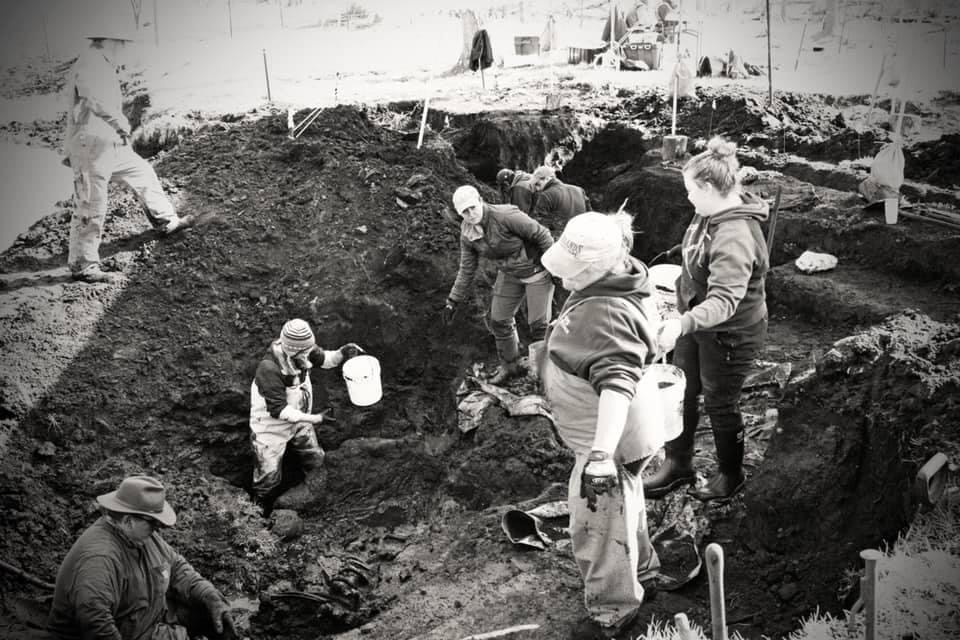
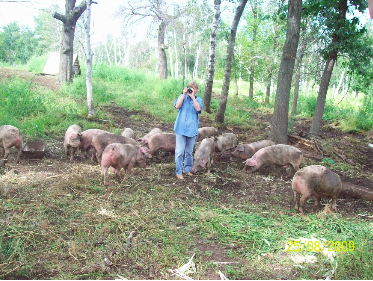
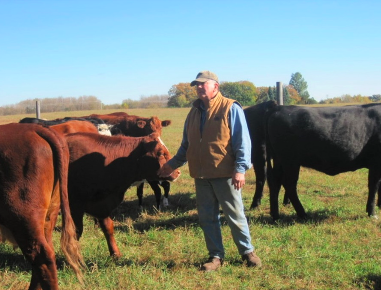
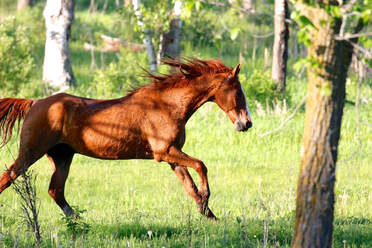
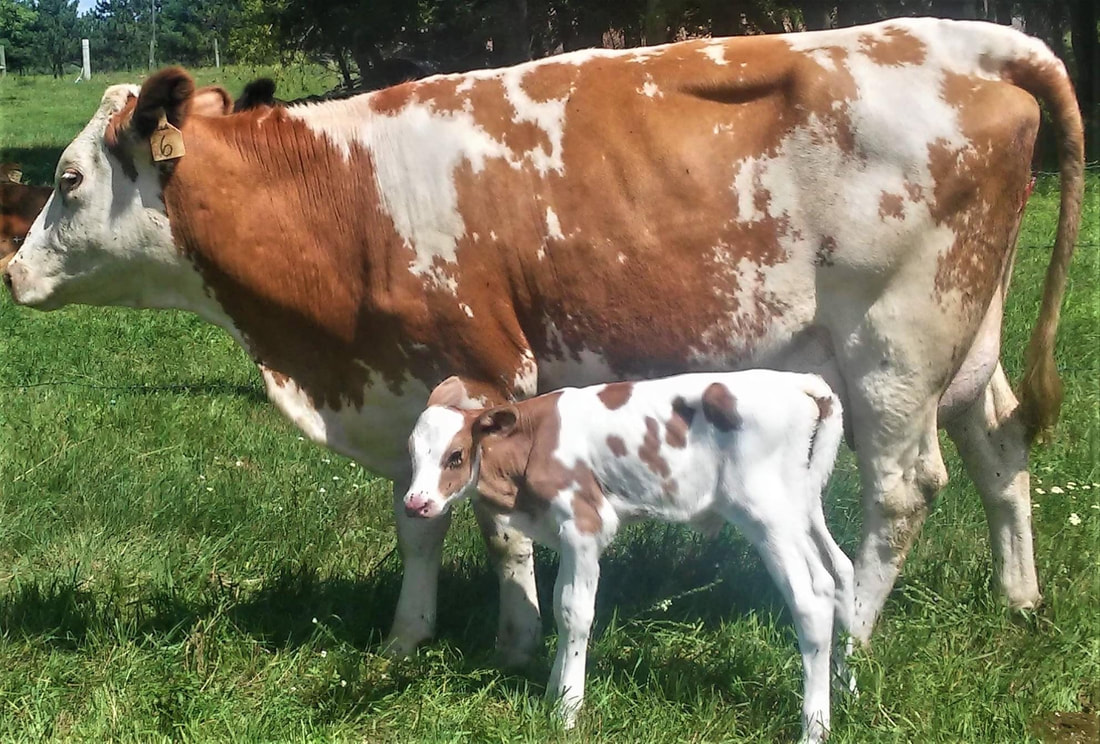
 RSS Feed
RSS Feed



